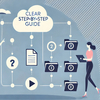
A product launch plan is a strategy developed to introduce a new product to potential customers. Some may think it is just a list of actions to create a buzz around the product, like trade shows, publications in the mass media, press releases, online product promotion, etc.
However, all this effort may be in vain if the actions are not united by the strategy. The latter has to give answers to three main questions:
- What is the purpose of the product? What problem(s) does it solve? The possible answers here may be: Our product is designed to solve your problem with vacuum-cleaning your car. Or: With our sealant, the problem of leaking pipes will be solved forever, etc.
- What is the target audience? In the case of a leak sealant, the target customers can be plumbers, housewives, engineers specializing in pipeline design, wholesalers, and retailers of sanitary equipment and accessories, etc. Your launch plan focused on housewives will differ cardinally from the plan focused on engineers.
- What is the best way to launch the product? (Here come the marketing actions listed above and others). The challenge is to choose the right marketing vehicles. In the case of housewives, these can be commercials on ‘shop and show’ TV channels or online markets, while for engineers, articles on habr.com or other specialized sites will be the best option.
Without such a guiding strategy, your ‘scheduled’ promo events will remain just separate actions. They will never turn into a winning marketing campaign. This blog will help you develop an effective launch plan and communicate your message across to your target audience.
Defining a Product Launch Plan
A product launch plan is a strategy and, at the same time, a set of actions aimed to bring your product onto the market. Strategic thinking is the key to an effective product launch. All activities within the launch campaign (a post in the blog, a TV commercial, or an endorsement) should be rooted in the product launch strategy. You cannot just collect all the possible marketing tools and mix them. There must be logical grounds for using a certain tool.
To develop a strategy for your launch plan, you need to think what and who your product is for. Only then you will have a clear picture of how to launch the product.
Let’s take another example. Let it be a wristwatch with a gold-plated case and strap. Think of its purpose: is it purely decorative, or can it be used as a chronometer? Is it water resistant? What is its ATM value? Then think of the potential customers: is it an office worker or a diver? What are the customer’s age, sex, and revenues?
The answers to these questions will help you select the appropriate marketing tools and build a robust launch plan.

How to Create a Solid Product Launch Plan?
Any launch plan aims to provide customers with information about your product or service. That is why it is essential to start planning the campaign beforehand. A launch campaign should begin 4-6 months before the launch so that the potential customers know everything about the product before it gets on the market. And when it is finally on the shelves, they will know how to find it among a dozen similar products.
Besides, an early campaign creates the effect of suspense. Buying is adrenaline after all, so why not give the customers more thrilling emotions?
A good launch plan helps you to schedule and arrange the order of events and actions. The latter can also be combined to reach all the segments of the audience: both the target customers and the audience inside the company (customer service, your website support team, the managers, and everyone else concerned).
There are three basic steps to be followed to achieve the best results.
Step 1. Pre-Planning Stage
At the pre-planning stage, while you are still building a product, three main activities can be singled out:
- a pre-planning analysis based on the 5Ws + 1H formula
- developing a sales messaging guide
- in-depth research of the customers’ needs.
Every activity which concerns communication with a target audience (be it blogging, writing newspaper articles, or planning a marketing or a political campaign) should start with a simple pre-planning analysis formulated as 5Ws + 1H. Just ask yourself six questions:
- Who? Who are the sellers, producers, developers, customers, wholesalers, and retailers? What are their needs and expectations?
- What? What product are you going to launch?
- Where? Where are you going to launch the product? Is it Asia, India, or North America? Cultural differences and intercultural communication matter.
- When? Do you associate the launch with holidays, like Christmas or New Year? Holidays can transform your launch plan dramatically. Just think what is right for you, to avoid holidays or use them for your ends?
- Why? Why are you launching the product? Is there some urgent problem that can be solved only with its help?
- How? How can the product help customers to resolve their issues? Think for your customers. Offer them ready-made solutions on how to use your product to solve their problems. There is also another ‘how’: How can the launch campaign be implemented? Think about the right marketing tools.
For example, a company called YEAST INTERNATIONAL sells dry yeast baking powder. The new product they are launching is yeast as a bioactive additive. The producers should ask themselves questions at the pre-planning stage: Why is yeast important as a bioactive additive? How can it improve the quality of life? What are the innovative features of the product (supports cardiovascular health and healthy digestion, promotes glucose metabolism and healthy weight management)? etc.
Developing a sales messaging guide is another activity to be considered at the pre-planning stage.
Based on the answers obtained as a result of the 5Ws and 1H analysis, a sales messaging guide is developed. It helps to maintain uniformity and consistency in describing the product. It highlights the distinctive features of your product and focuses on how it differs from your competitors.
Sales messaging is a set of standard descriptions you develop to speak about your company, product, or service. These standard descriptions include the main benefits of your product and the problems it is designed to solve. The standard formulations can be used as templates for the further creation of scripts (dialogues with customers), press releases, email templates, and other sales materials.
The purpose is to develop a uniform language that your team will use in communication with the customers. This language will be directly associated with the product and will be like a visiting card. Another advantage is that a product-specific language will help to position the product on the market, making it more recognizable and distinctive from similar products.
The third constituent of the pre-planning process is in-depth research of the customers’ needs.
Analyzing the needs and expectations of the target audience helps to formulate the best offer that suits the current demand. It also helps your team to get your message across to the customers.
This can be achieved by interviewing customers about how they feel about your product, getting feedback, and using the results to adjust the sales message and the product itself if necessary.
Step 2. Planning and Scheduling Stage
The core of the launch plan is a list of launch activities and events. At this stage, you select the key marketing vehicles for your launch campaign. These usually include:
- Supporting materials: data sheets, specifications, brochures (these materials are developed together with the product itself by a team of in-house or outsourced writers).
- Press events (press conferences, briefing sessions, presentations, etc.).
- Trade shows (events aimed at presenting your product to customers in an off-line mode so that everyone can see, touch, taste, and test your product).
- Publications (these are not limited by publications in the press; today, blogging is becoming more influential than the traditional media).
- Product evaluations and endorsements (these can be both from ordinary people and celebrities; recommendations can increase interest, boost future sales, and ‘hype up’ the product).
- Online communications (posts in social nets, on professional sites and portals, blog posts).
- Company web pages (information on the company website is the source of original first-hand quality information).
The list above is far from being exhaustive. It can be enlarged depending on the needs of your launch campaign.
Step 3. Assessment Stage
At the final stage, you must think of the success factors: What launch campaign will you consider successful? What are the success criteria for a new product launch? Think of criteria that can be measured, like revenue, number of attracted partners, number of endorsements, sales dynamics, etc.
An interesting assessment parameter is the number of reposts and quotes of the information from the company website. The number of links leading to your website is a success indicator as well. It shows that people are interested in your product.
A publication in the media is the brightest example of success, but only in case the publication is not budgeted from your launch plan. It must be free for you. Only in this case it shows that the media are really interested and that the content you produce is relevant and can attract new readers.

ClickHelp: the Best Tool for Creating a Product Launch Plan
ClickHelp is a state-of-the-art document management platform that will help you create, manage, share, and reuse documents. The content reuse feature is especially important when it comes to sales messaging, as your team of copywriters will have to do with similar text fragments (product or service descriptions, scripts, e-mail templates, etc.).
The idea behind content reuse is that text is regarded as a combination of fragments that can be created, used, and reused to produce new documents. This helps to save time otherwise spent on writing and rewriting similar texts.
Another advantage is the uniformity of content. It is based on single-sourcing, which helps to trace all similar docs to one source and align the new content with the initial material. The result is a uniform language that your team will use in communication with the customers within the product launch plan, as well as other sales messaging content.
Among other ClickHelp features, the following can be mentioned:
- Ready-made templates: with these, you have just to fill in your content and get several publications (different reader-facing versions of your document – .doc, PDF, HTML formats, etc.).
- Teamwork: with ClickHelp, your copywriting team can work together on the same document in real-time mode, making adjustments and adding comments.
- Auto-formatting: the Import wizard will help you to format your document at the initial stage.
These and many more features are available in ClickHelp.
Conclusion
In product development, you already have to consider the future product launch. This means elaborating a strategy for delivering information about the product to the target audience. Developing a product launch plan combines strategic thinking and action plans. The latter looks like a list of marketing actions and events you will choose as information and promotional support for your product.
In addition, developing a launch plan will entail creating a package of sales messaging documents. They have to be uniform both from the standpoint of appearance and content. To achieve this, ClickHelp offers a set of document management tools that will help you create, manage, share, and reuse content.
Good luck with your technical writing!
ClickHelp Team
Author, host and deliver documentation across platforms and devices



